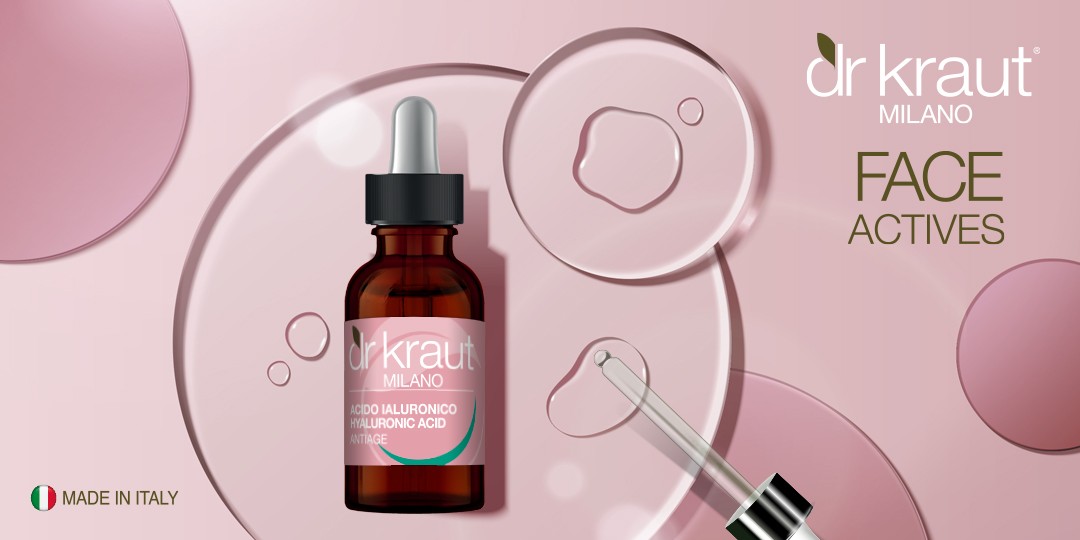
EXFOLIATING, HYDRATING, BRIGHTENING OR ANTIOXIDANT: AN ACID FOR EVERY NEED
Acid-based products, peeling, exfoliating masks and lotions are increasingly widespread in the beauty industry and in the skincare world. Chemical exfoliation is a precious ally for a brightening, tonic, uniform and compact skin.
The types of acid used in the cosmetic products are a lot and they have specific functions: they can have a brightening, exfoliating, anti-age, hydrating or antioxidant action.
Acids are really effective and functional elements, if they are use consciously, they can bring to visible results, be beneficial and improve the skin condition. Although, an excessive and incorrect use can compromise the skin barrier, especially that of the most sensitive skin.
For this reason, before using acids on your skin, it’s necessary to know the differences between every ingredient and understand how to mix them in the correct way in order to find the perfect combo for your beauty routine!
How can we distinguish the different kinds of acids?
The first differentiation is between ALPHA-HYDROXY ACIDS (AHA) and BETA-HYDROXY ACIDS (BHA): AHA, including Glycolic and Mandelic Acid, are water-soluble and they work on the skin surface eliminating dead cells on the skin. BHA are liposoluble and they deeply penetrate into the lipid layer between the skin cells. In this way BHA can work deeper and dissolve the excess sebum that closes the pores.
Another differentiation is that between photosensitizing acids and not photosensitizing: the former make the skin sensitive and susceptible to the sunlight and to sunrays, they involve the risk of sunburns, rashes or sunspots. For this reason, it is recommended to apply them at night, to use a sunscreen protection and to stop the usage during summer. While, the latter can be used in summer too, since they don’t involve any risk for the skin.
Based on these differences, we can analyze the acids of the FACE ACTIVES line by Dr Kraut Milano, that consists of face serums formulated with functional and super concentrated actives.
Mandelic Acid
Mandelic Acid comes from almond, it is an alpha-hydroxy acid and it works on the most superficial skin layer. Although it has an exfoliating action, it is known to be the most delicate acid. It’s the best friend of the most sensitive and reactive skin.
It has anti-aging, purifying and whitening properties and thanks to its non-photosensitizing action it can be used during summer too, for a delicate but effective exfoliation.
Glycolic Acid
Glycolic Acid is one of the most famous and most used exfoliant, it comes from fruits and just like the Mandelic one, it is an alpha-hydroxy acid that works on the skin surface.
It has a much more aggressive exfoliating action than Mandelic Acid and for this reason it is not advised for sensitive skin and it’s recommended for oily, combination and acneic one. It’s the best friend of everyone who desires to treat acne scars, even out the complexion and fight hyperpigmentation, sunspots and the first aging signs.
Unlike Mandelic Acid, the Glycolic one is extremely photosensitizing, especially if used at high concentrations: it is better to use it during the winter season, at night and applying always the sunscreen protection after the treatment.
Azelaic Acid
Azelaic Acid is a saturated dicarboxylic acid, naturally found in wheat, barley and rye. Even if it’s less popular than the previous acids, it is an inevitable ingredient in the beauty routine of acneic skin. It has antibacterial, anti-inflammatory and anti-radical properties: the perfect mix to reduce the proliferation of bacteria, the main cause of pimples and blackheads.
Of course, Azelaic Acid is more delicate than the Glycolic, it is not photosensitizing and it can be used all year long (during summer it is preferred to use it at night). However, it is highly recommended to use a sunscreen protection after a treatment based on Azelaic Acid.
All the analyzed acids have got an exfoliating action, in fact Mandelic, Glycoli and Azelaic acid CAN’T be combined. Over exfoliation can bring to serious skin problems, especially to sensitive and reactive one.
Ascorbic Acid (Vitamin C)
Ascorbic Acid is known as Vitamin C, it is a strong antioxidant that neutralizes the action of free radicals. It improves the production of collagen, counteracts the first aging signs and works on melanin accumulations that cause sunspots and discolorations.
It isn’t a photosensitizing acid and it can be used all year long for a radiant, bright and even skin.
Hyaluronic Acid
Maybe the most famous, Hyaluronic Acid gives a pool of intensive hydration, its molecules are able to retain water, thus giving a turgid and tonic complexion. It is good for all skin-types, especially those with the first aging signs and a progressive loss of the skin tone.
Besides the hydrating action, Hyaluronic Acid is a strong anti-age and it has an antibacterial and lenitive action. It is an extremely versatile ingredient and it can be combined with all the previous acids, even if the perfect match is that with Vitamin C!
